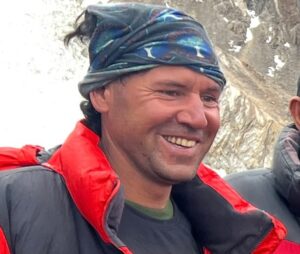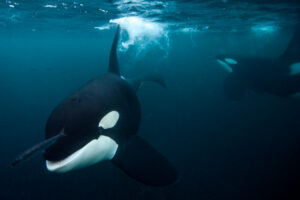Unconventional education methods have increasingly hit the mainstream. Many families now choose to educate their children through World Schooling, Home Schooling, Montessori establishments, and in the case of the Rapsey family, “immersive education” (not the gaming type). Parents Jorinde and Chris Rapsey chose New Zealand’s Te Araroa Trail as a six-month classroom for nine-year-old Elizabeth and seven-year-old Jonathan, who have now become the youngest people to walk the length of New Zealand.

The Te Araroa Trail meanders 3,000km from Cape Reinga, at the top of New Zealand’s North Island, to Bluff, at the bottom of the South Island. Since it opened in late 2011, Te Araroa has attracted around 1,000 trampers annually.
Unlike its long-distance cousins around the world, such as El Camino in Northern Spain or the Pacific Crest Trail in the US, Te Araroa’s route isn’t entirely marked. Rather, it follows a mixture of tracks, highways, roads, beaches and paddocks. It passes through towns and cities, past rivers and across private land. It necessarily involves taking a ferry across the Cook Strait, between the two islands.
As with many of New Zealand’s great walks, Te Araroa involves sleeping in Department of Conservation huts, resilience with unpredictable weather and reasonable fitness. Perhaps the most challenging part of the trail crosses the Southern Alps, with its high ridgelines and exposed cliff edges. Other sections include river crossings up to three kilometres wide.
For cooking, backpackers carry their own stoves to use at the huts. Along the trail, particularly on the North Island, there are opportunities to stock up at dairies, the Kiwi word for a convenience store, or to grab a famous New Zealand pie. Trail Angels offer intermittent support with chilly bins (the Kiwi version of a cooler), left roadside for walkers to help themselves.

It’s still a far cry from the school canteen and local playground that most kids are familiar with, but Elizabeth and Jonny quickly adapted to the adventure. Their parents reported just the occasional squabble over nondescript topics like who gets which flavor of museli bar or whose turn it is to walk next to Mum or Dad.
This is the longest distance that the Rapsey kids have tramped, but they had plenty of training. They previously packrafted the Makarora River, climbed Roys Peak in Wanaka, walked 22km in winter when Elizabeth was seven and spent up to 10 hours at a time on their feet. In this, they are following in the footsteps of their parents, who first met during a long hike up 3,000m Mt Aspiring. At the time, Jorinde was 18 years old and had just emigrated to New Zealand from her native Netherlands.

It was Jorinde who led the decision to steer away from traditional education for Elizabeth and Jonny. She herself completed a philosophy degree but she wanted her children to figure out what interests them, rather than learn for the sake of passing tests. Jorinde home schools the two kids, while Chris does a variety of contract jobs. Their professions give them the freedom to undertake adventures like this one.
Recent studies have spotlighted the mental and physical benefits of the outdoors on children. By contrast, Nature Deficit Disorder — preferring to spend more time indoors than out — has become more and more common in kids, likely due to the allure of electronic distractions.
The Rapsey children continued their home schooling throughout the six-month adventure and showed no signs of poor mental health, or ADHD. They’re vibrant, talkative, engaged and curious. Their language skills are typical of kids their age, although you might say that their conversation, based on real world topics rather than Disney or the like, is more interesting.
As part of their school work, they solved math problems relevant to their adventure: What is the required ratio of milk powder to water, for example? How many kilometres are left in the trek when subtracting the day’s mileage? In the evening, they played card games and learned how to read maps.
The walk became something that both kids were proud of, and Elizabeth cried at one point where the family had to hitch a ride over a small section of road because they’d heard it was unsafe. When they noticed from the window that it would have been safe after all, they went back and did it on foot, so that they could say that they truly walked the whole trail.
Although they were tired at the finish, as anyone who walks 20 to 40km a day for half a year would be, the kids were so used to activity by then that they quickly became fidgety when it was over. In the car on the drive home, Elizabeth said, “I want to walk again.”






